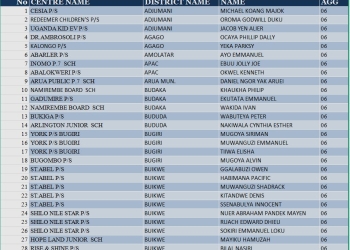
Ethereum prices showed resilience over the weekend, bouncing back after a steep drop triggered by the ByBit hack. The crypto exchange suffered a security breach on February 21, leading to $1.4 billion in stolen ETH.
Initially, Ethereum fell from $2,832 to $2,629, a 7% decline in just a few hours. However, it quickly regained momentum, reaching $2,800 before slightly pulling back.
ByBit has since taken aggressive measures to restore its reserves. According to blockchain analytics firm Lookonchain, the exchange secured 446,870 ETH—worth approximately $1.23 billion—through loans, whale deposits, and direct purchases.
ByBit’s CEO, Ben Zhou, confirmed that the exchange had fully covered the gap and now maintains a 1:1 reserve of client assets.
The recovery effort has included major players such as Galaxy Digital, FalconX, and Wintermute, who facilitated over-the-counter sales of ETH to ByBit. Despite these efforts, Ethereum remains volatile, with traders closely watching resistance levels at $2,800 and beyond.
ByBit Hack and Its Impact on the Crypto Market
The attack on ByBit is now considered the largest crypto exchange hack in history. On-chain analysts have linked the breach to North Korea’s Lazarus Group, a notorious cybercrime syndicate. In response, ByBit launched a $140 million bounty program in an effort to track down the stolen funds.
While the exchange has taken decisive action to secure assets, the event has rattled investor confidence. Safe, the decentralized custody protocol used in ByBit’s cold wallet infrastructure, has also come under scrutiny. ByBit has stated that it is working with regulatory bodies, cybersecurity firms, and blockchain networks to prevent further outflows.
Despite the initial chaos, Ethereum’s swift rebound suggests strong underlying demand. However, as ETH stabilizes, another blockchain is facing its own challenges—Solana. The network has struggled with congestion and reliability issues, but a new Layer-2 project, Solaxy, aims to fix these problems.
Solaxy: Solana’s First Layer-2 Scaling Solution
Solana has long been marketed as a high-performance blockchain, boasting theoretical speeds of up to 65,000 transactions per second. However, in practice, congestion and network failures have limited its efficiency. Solaxy, a new Layer-2 project, is emerging as a potential solution.
Solaxy has already raised $23.2 million in its presale, demonstrating strong investor interest in its ability to improve Solana’s scalability. By handling transactions off-chain before bundling them for final settlement on Solana, Solaxy aims to increase speed and reduce costs.
DON’T MISS OUT ON SOLAXY’S POTENTIAL 100X GAINS – JOIN THE PRESALE TODAY
This approach mirrors Ethereum’s successful Layer-2 solutions, such as Arbitrum and Optimism, which have significantly enhanced transaction efficiency. If Solaxy can bring similar benefits to Solana, it could play a crucial role in the blockchain’s long-term growth.
Investors Are Betting on Solaxy’s Potential
The success of Solaxy’s presale highlights the growing demand for scalable blockchain solutions. With congestion issues limiting Solana’s potential, a dedicated Layer-2 network could be a game-changer.
Solaxy also introduces a modular framework, allowing developers to build customized dApps without being affected by network slowdowns. Additionally, the project will feature a bridge between Solana and Ethereum, facilitating seamless asset transfers between the two blockchains.
Solaxy’s native token, SOLX, will serve multiple functions within the ecosystem. It will be used for transaction fees, staking rewards, and governance voting. Investors who stake SOLX can earn an estimated annual yield of 175%, though this rate will decrease as more tokens are locked into the staking pool.

SOLX Presale Gains Momentum as Listing Approaches
Currently priced at $0.001644, SOLX is available through the presale, which has attracted significant attention from traders looking to secure an early position. Solaxy’s team has also partnered with Best Wallet, allowing investors to purchase SOLX directly through an in-app feature.
GET IN EARLY ON SOLAXY BEFORE PRICES RISE – BUY SOLX NOW
Once the presale concludes, the team plans to list SOLX on decentralized exchanges (DEXs) and allocate 10% of the supply for liquidity. Additional funds will go toward development, marketing, and staking rewards.
Can Solaxy Challenge Ethereum’s Layer-2 Ecosystem?
Ethereum has been the dominant force in blockchain scaling solutions, with its Layer-2 networks handling billions in daily transaction volume. However, as Solana continues to grow, the need for its own Layer-2 infrastructure has become increasingly apparent.
Solaxy could be a crucial step toward making Solana more competitive. If the network successfully integrates with Solana’s existing infrastructure and attracts developers, it could provide an alternative to Ethereum’s scaling solutions.
VanEck predicts that Solana’s market share in the smart contract sector will rise from 15% to 22% by the end of 2025. A successful Layer-2 implementation like Solaxy could accelerate this growth and strengthen Solana’s position in the market.
With a clear roadmap, strong presale performance, and a focus on scalability, Solaxy is positioning itself as a key player in the next phase of blockchain development. Investors looking for a project with real-world utility and growth potential are keeping a close eye on SOLX.

















